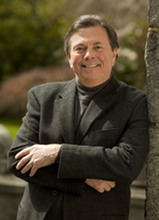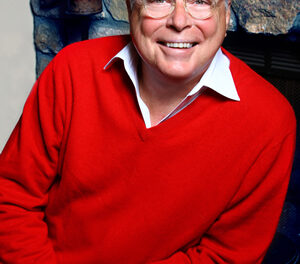Sunday afternoon at the Cameron Art Museum in Wilmington, North Carolina, world-renown pianist Paolo Gualdi presented a brief overview of his upcoming concert, at which he will perform a number of Chopin’s early works with the Wilmington Symphony Orchestra. Gualdi walked the attendees through a short history of Chopin’s early life, and gave the engaged crowd a stripped-down taste of what they could expect to hear at the Wilson Center on October 2nd.
Gualdi first introduced the audience to Chopin’s earliest known work, Polonaise in G minor, which he published at age 7 – and which earned him the nickname, Polish Mozart. Gualdi described the piece as “somewhat childish,” but still demonstrated the remarkable talent Chopin had from such an unbelievably young age.
From there, Gualdi introduced the Nocturne in E minor, Op. 72, No.1 which Chopin composed at 17. Inspired by the Irish composer, John Field, Chopin wrote this piece as part of his formal education in 1827. Chopin kept the piece in his portfolio; it was never published until 1855, six years after his death. The nocturne features some of Chopin’s quintessential virtuosity: the steady flow of the bass line moves fluidly underneath soft-spoken chords in upper-register. The occasional technical flourishes, for which Chopin would become most well-known, shine through like wispy moonbeams in the night.
As Chopin grew older, and moved through his formal education, he quickly became well-known in the musical community. Gualdi shared a lovely anecdote about famed German composer Robert Schumann, who once exclaimed upon meeting Chopin, “Hats off gentlemen, a genius!”
Gualdi, then introduced the warmly attentive audience to a number of Chopin’s etudes. An etude, as Gualdi explained, is a sort of musical exercise that becomes a piece of music, such as a scale that one might use to warm-up or as training. Gualdi played excerpts from several of Chopin’s earliest etudes, which indeed sounded like glorified scales, designed to the soloist’s technical abilities while also possessing a more musically interesting quality.
In 1831, at the age of 21, Chopin composed the tragically epic Revolutionary Etude, Op. 10. No.12. Inspired and grief-stricken by the fall of Warsaw, Chopin expressed his sorrow, anger, and patriotic pride in this piece which begins strong and builds upon itself to something so full of the complex emotions that make up a heavy heart. The audience let out a palpable sigh of catharsis after the final notes were played, seeming to have almost held their breath for its duration.
Gualdi then segued from Chopin’s patriotism to his career as a concerto composer. His two earliest concertos, which will feature at the October performance, highlight Chopin’s interest in combining his idiosyncratic piano style with a full orchestra.
At age 19, Chopin composed Concerto No. 1 in E minor. In this work, the piano features most prominently, while the role of the orchestra is diminished, relegated to a supportive role. Like many of the young composer’s other works, “Concerto No. 1” features complex melodic progressions and the virtuosic “fireworks,” as Gualdi described it, that frequently color Chopin’s music.
Before teasing the crown jewel of the upcoming concert, Concerto No. 2 in F minor, Gualdi introduced the listeners to a Polish folk music, with which Chopin was deeply fascinated, known as the mazurka. The mazurka is similar to the polka, with some subtle rhythmic differences, but both genres share a history as traditional folk music used for dancing.
Gualdi then played snippets of the concerto highlighting the ways in which it clearly resembles the traditional mazurka which so inspired the young Chopin. Unlike Chopin’s first concerto, Gualdi explained that Concerto No. 2 utilizes the orchestra much more fully, and for that reason, he restricted his samplings to brief segments from each movement. He highlighted the two themes of the first movement, which embellishes classic mazurka rhythms and melodies.
The second movement of the concerto is widely considered a masterwork. According to Gualdi, Chopin composed this moody nocturne for a Polish soprano with whom he was infatuated. It carries the listener softly between dream-like atmospheres and grounded, Earthy states.
The third movement of the concerto adopts the dance-like qualities of the classic mazurkas, completing the concerto’s thematic interest in Polish folk music. After playing a particularly upbeat segment of this final movement, Gualdi stood up from the piano, and turning to the audience, he chuckled, “I don’t know if they allow dancing at the Wilson Center, but I hope so.” After what I heard today, I hope so too!
The afternoon performance concluded with a surprise number performed by a local youth violinist named Saybren Long. Accompanied by Gualdi, Long performed an intense violin concerto by Russian composer Dmitry Borisovich Kabalevsky, the Violin Concerto in C. When he finished the crowd gave an extended applause, which reinforced the positive, easy-going atmosphere that echoed through the entire afternoon in the museum’s small concert hall.
Although we only heard small portions of the final concerto, Gualdi’s extensive knowledge, his technical prowess, and his enlightening passion for Chopin got me quite eager to hear the fully orchestrated performance come October.
For information on the upcoming performance, see our calendar.












